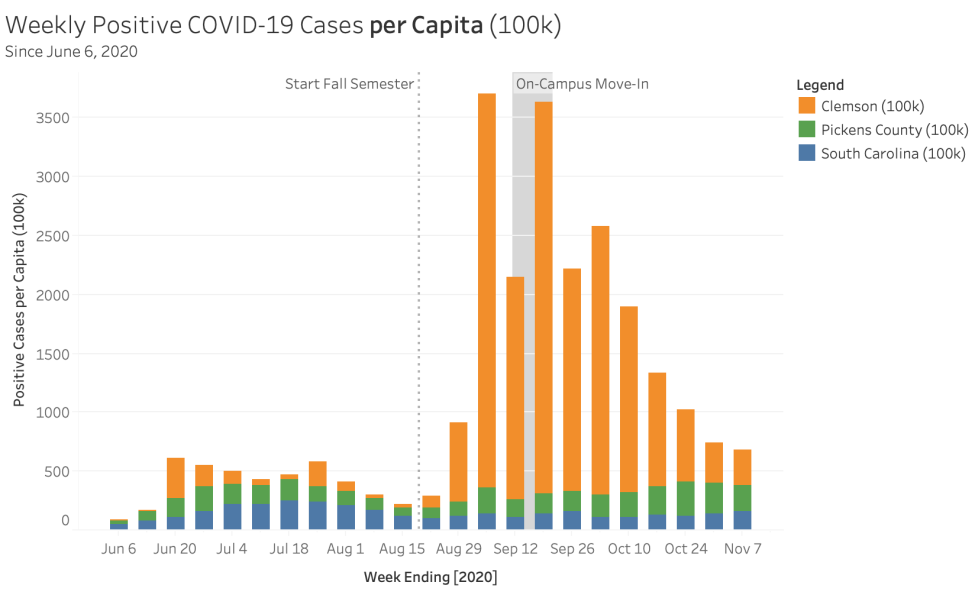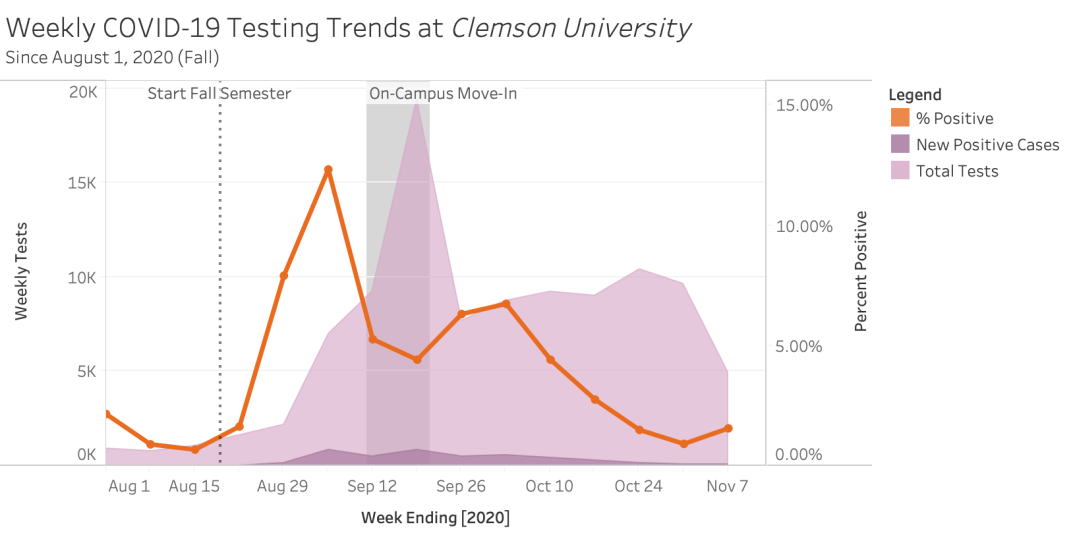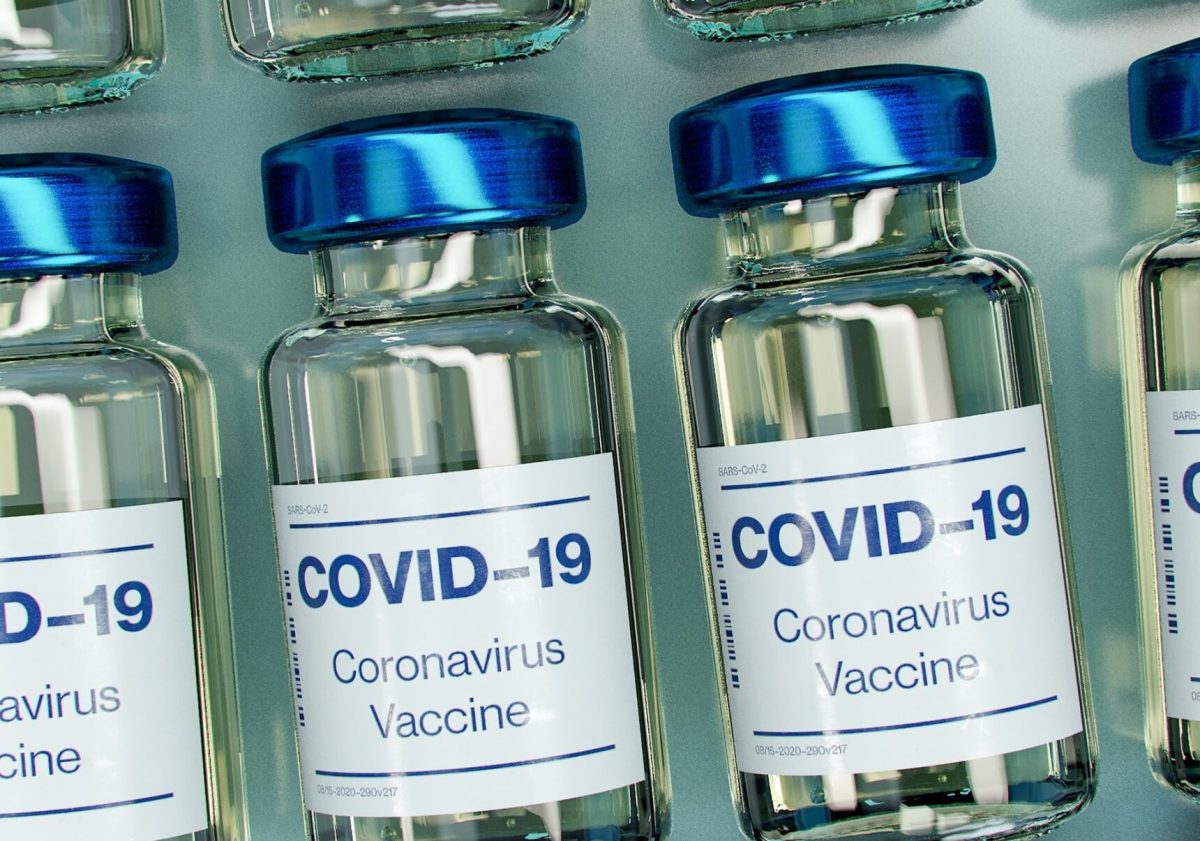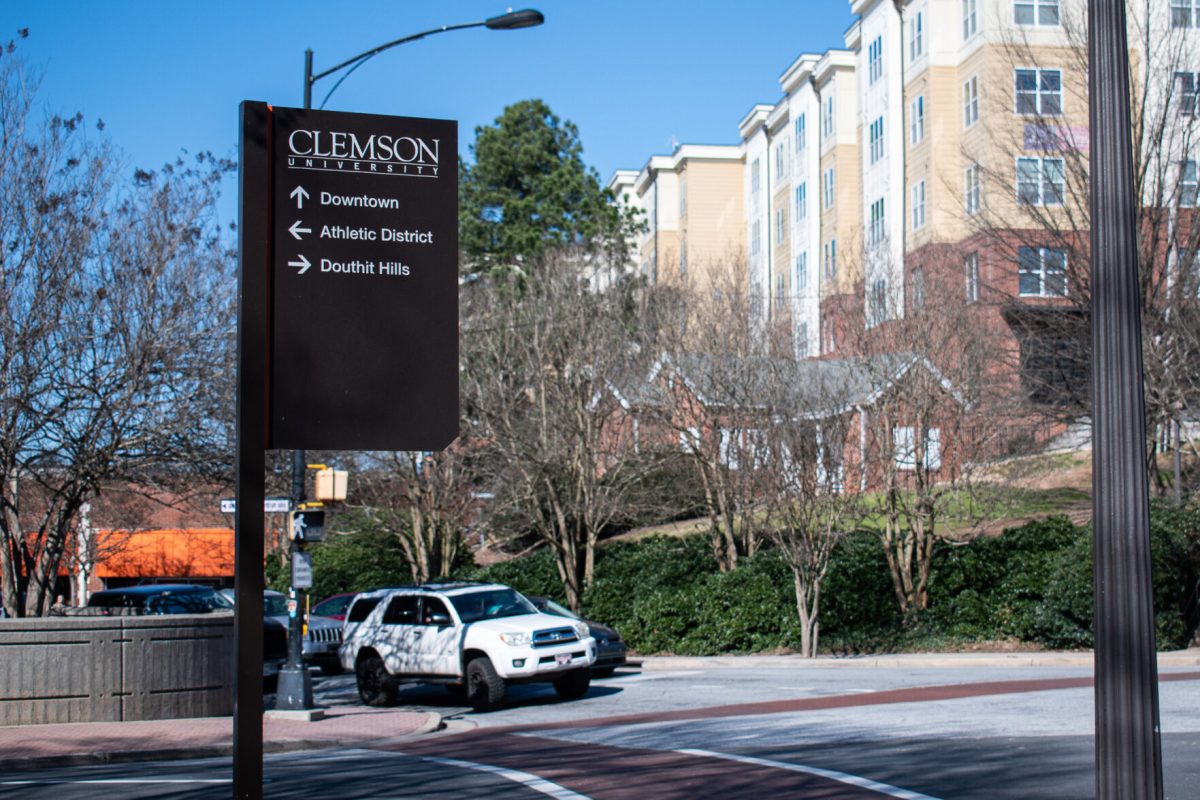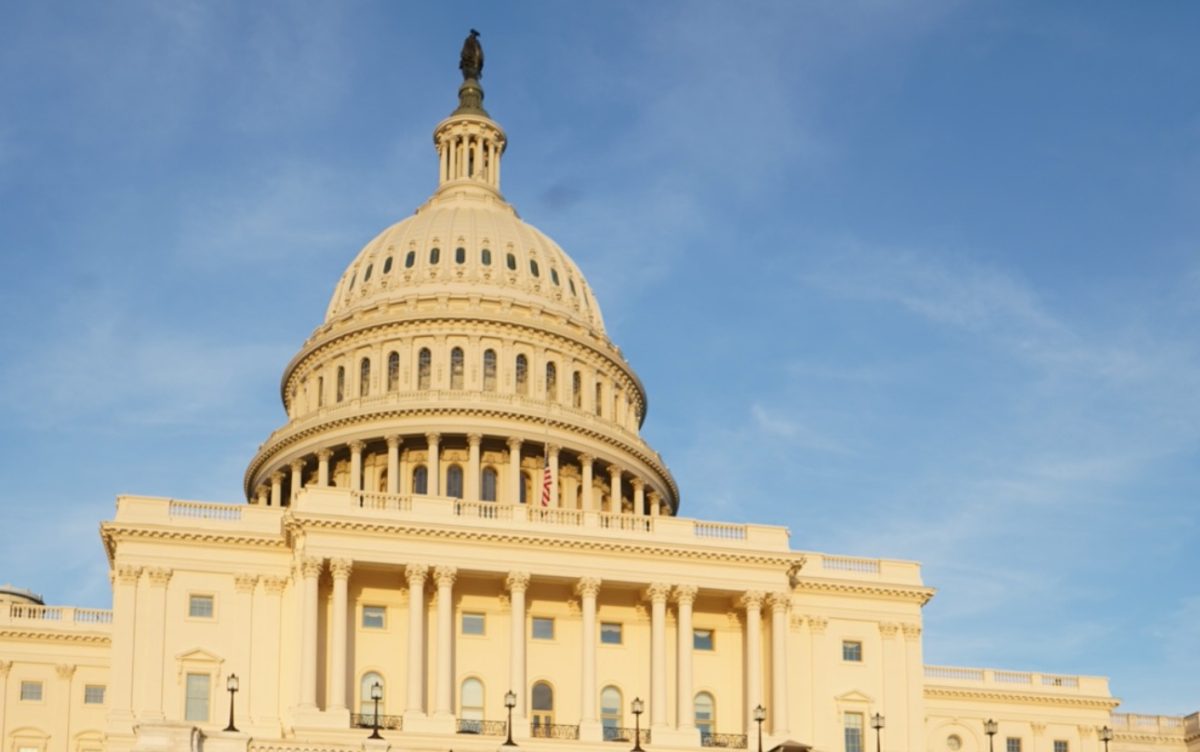On Jan. 21, 2020, the Centers for Disease Control and Prevention (CDC) confirmed the first COVID-19 case in the United States. Nearly 10 months later, the number of cases spiked, setting national and state records each day.
On Friday, Nov. 6, Johns Hopkins University reported 126,000 new COVID-19 cases in the United States — a new single-day record. COVID-19 is spreading throughout America with significant upticks in the Midwest.
The rapid growth of COVID-19 cases in the United States may be due in part to a changed age distribution of the coronavirus and asymptomatic transmission among young adults. The CDC published a report on Oct. 2 detailing how earlier in the pandemic, COVID-19 cases were highest among older adults. During the period from June to August, though, people aged 20-29 years had the highest COVID-19 incidence rate, accounting for more than 20% of all confirmed cases during that time.
Dr. Corey Kalbaugh, chief epidemiologist of the COVID-19 response team at Clemson University, says the CDC’s report on higher case counts among younger people is reflected in the cumulative numbers tracked at Clemson.
“[Clemson] is going after asymptomatic people,” Kalbaugh said. “That’s the primary way this virus spreads. It spreads from people that don’t know they have it. Almost all cases at Clemson are asymptomatic.”
COVID-19 cases at Clemson University are the highest among other universities in the United States with more than 4,700 cumulative positive cases reported since June. Nearly half of those cases were reported since the start of in-person instruction on Sept. 21. University officials point to testing as the reason for the high case count.
Clemson now mandates that on-campus students are tested once per week. Off-campus students continue to be randomly selected for testing, and the university has averaged over 8,000 tests per week over the past month.
“There is nothing unique about Clemson or its student body that would make our numbers higher than anywhere else. We’re just going after them,” emphasized Kalbaugh.
Kalbaugh said that, on average, each Clemson student has been tested three times for COVID-19.
There is currently no standardized or uniform response by universities in the United States on how to respond to COVID-19. In addition, universities show a range of outcomes to in-person instruction during the pandemic, with some reporting few to no cases on campus and others seeing unmanageable outbreaks and choosing to close.
“When you throw in the towel and let COVID run rampant on your campus, you can look okay with [low] numbers because so many people are asymptomatic. We didn’t do that here,” said Kalbaugh.
Clemson University is not the only university mandating testing for COVID-19. Tufts University in Boston is testing all undergraduates twice per week, according to Inside Higher Ed. Other universities such as the University of Illinois are following similar practices. The argument of “more testing, more cases” is also being made on a national level, with doctors and epidemiologists responding that it’s not that simple. The Tiger News collected and analyzed data to provide greater insight into what is currently displayed on Clemson’s COVID-19 dashboard. Clemson’s dashboard does not include historical data, clusters of cases or cumulative cases counts from residence halls and communities. A third-party group named “We Rate COVID Dashboards,” made up of Yale University professors and students, gave Clemson’s dashboard a “B.” The score from the group is derived from the dashboard only being updated twice a week rather than daily, the lack of city/county data and no information about a campus summary.
The Tiger News asked Joe Galbraith, associate vice president for Strategic Communications, if Clemson has considered adding campus clusters to its dashboard.
“The balance between information and inciting panic or providing information without context is counterproductive to the health obligations that we have as a university,” Galbraith said. “We have never gotten to the point where it was even a floor, much less a whole residence hall, that was a hotspot that needs to be contained.”
The Tiger News reached out through a Freedom of Information Act request to University Relations, requesting “the total number of positive COVID-19 cases by community, cluster or residence hall for on-campus residents.” The information, while it exists, cannot be provided due to a potential violation of FERPA, the Family Educational Rights and Privacy Act. Other universities, including the University of North Carolina Chapel Hill, share this information in great detail on their COVID-19 dashboards. Kalbaugh contends that such information would do more harm than good.
“Students know that their residence hall has been targeted for informative testing based on a couple of extra cases than expected,” he said. “The way COVID works, you are not likely to be exposed if you are not in regular contact with somebody. If you’re in a building with somebody [positive], that’s not nearly the same as if you were on [the same] floor.”
Starting on Wednesday, Nov. 11, The Tiger will publish regular updates of COVID-19 data for Clemson University, Pickens County and South Carolina to add transparency and awareness of the current status of the pandemic as experts predict that cases will increase with the upcoming winter. Data from The Tiger will include historical information since the beginning of the pandemic and fall semester, as well as context of positive cases per capita at Clemson University compared to other universities of similar size and location.
The testing trends displayed include the positivity rate, which can be an indicator of sufficient testing and prevalance of the virus, as well as the total number of tests reported and positive cases in a week. The start of the fall semester and on-campus move-in are noted for their contribution to rises in positive cases, as students were tested prior to arrival for on-campus housing and in-person instruction, and as students arrived into the Clemson area from around the country or elsewhere.



